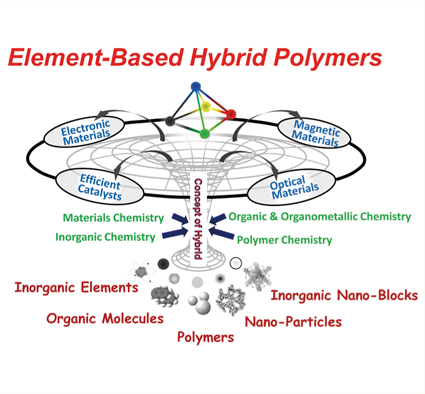Hot Topics
Vol. 60, No. 4, April (2011)
|
Large-Area Molecular Ordering Leads to the Conversion of Light Energy into Mechanical Force Takanori FUKUSHIMA, Nobuhiko HOSONO, and Takuzo AIDA RIKEN Advanced Science Institute |
||
|
|
Charge-by-Charge Assembly: New Strategy to Form Dimension-Controlled Organized Structures
Hiromitsu MAEDA1,2 1Institute of Science and Engineering, Ritsumeikan University, 2PRESTO, JST |
||
|
|
Fabrication of 3D Liposomal Array for Potential Biomedical Applications Yoshihiro SASAKI, Keita ABE, and Kazunari AKIYOSHI Institute of Biomaterials and Bioengineering, Tokyo Medical and Dental University |
||
|
|
Element-Based Hybrid Polymers
Yoshiki CHUJO Department of Polymer Chemistry, Kyoto University |
||
|
|
Realignment of the Definition of Biomimetics Tomonaga YOSHIDA New Energy and Industrial Technology Development Organization |
||
|
|
Preparation of Shell Cross-Linked Polymersome
Shin-ichi YUSA Department of Materials Science and Chemistry, University of Hyogo |
||
|





